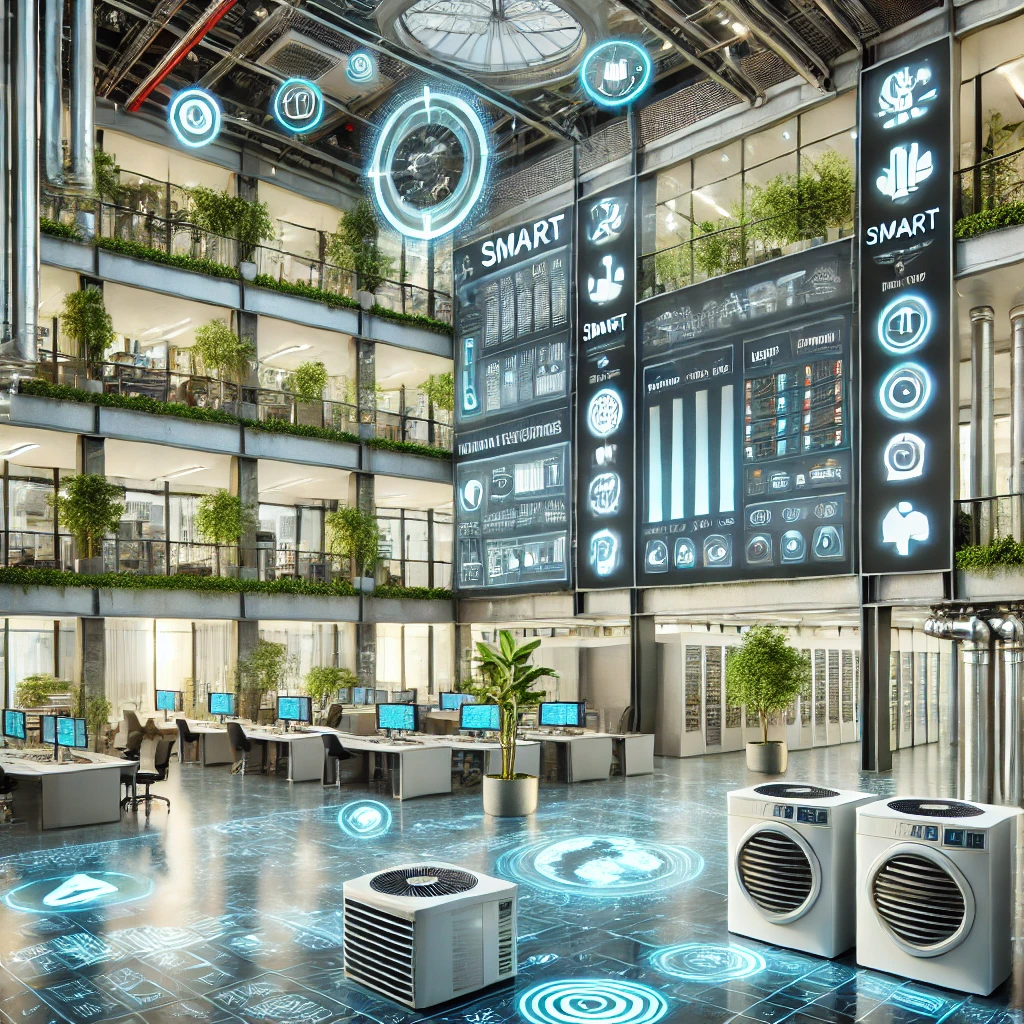Smart Technologies Revolutionizing MEP Systems in Commercial Spaces

In today's rapidly evolving commercial landscape, smart technologies are reshaping the way Mechanical, Electrical, and Plumbing (MEP) systems operate in buildings. These systems, essential to the functionality and comfort of commercial spaces, have undergone a significant transformation, driven by advances in automation, Internet of Things (IoT) devices, and artificial intelligence (AI). The integration of these cutting-edge technologies is not only enhancing operational efficiency but also contributing to sustainability, energy savings, and improved user experiences.
The Beginning of Smart MEP Systems
The rise of smart MEP systems can be attributed to the increasing demand for more efficient, sustainable, and user-friendly building operations. Traditional MEP systems often operated in isolation, relying on manual intervention and scheduled maintenance, which was time-consuming and costly. Today, with the advent of IoT sensors, cloud computing, and data analytics, MEP systems can communicate and collaborate to create optimized environments.
Smart HVAC systems, for instance, use IoT-enabled sensors to monitor temperature, humidity, and occupancy levels in real-time. This data allows the system to adjust heating, ventilation, and air conditioning based on current needs, reducing energy consumption and enhancing occupant comfort. By minimizing waste, smart HVACs also contribute to lower energy bills and a reduced carbon footprint.
Energy Management and Efficiency
One of the most notable benefits of smart MEP technologies is their ability to improve energy efficiency. With energy costs accounting for a significant portion of building operations, smart technologies offer real-time monitoring and predictive maintenance to reduce waste.
Smart lighting systems are a prime example. By using occupancy sensors and daylight harvesting technologies, these systems automatically adjust lighting levels based on the presence of people or available natural light. As a result, unnecessary energy consumption is minimized, and building managers can achieve substantial cost savings.
In addition, smart electrical grids within buildings use AI-driven energy management systems that predict peak energy usage times and optimize the power distribution accordingly. They can also integrate with renewable energy sources like solar panels, improving overall sustainability.
Predictive Maintenance and Enhanced Longevity
Predictive maintenance has become a game-changer in managing MEP systems in commercial spaces. IoT sensors embedded in HVAC, plumbing, and electrical systems continuously monitor the health of equipment and detect any irregularities. This proactive approach allows building managers to anticipate and address potential issues before they result in costly breakdowns or inefficiencies.
For instance, a smart HVAC system can detect anomalies in motor vibrations or refrigerant levels, signaling the need for maintenance well before the system fails. Similarly, smart plumbing systems can monitor water pressure and flow, helping to detect leaks or blockages before they escalate into major problems.
Predictive maintenance not only extends the lifespan of equipment but also minimizes downtime, which is critical in commercial spaces where any disruption in services can have a negative impact on business operations.
AI-Driven Building Automation
Artificial intelligence plays a crucial role in the automation and optimization of MEP systems. AI algorithms analyze vast amounts of data collected from IoT sensors, enabling real-time decision-making and system adjustments. This capability allows commercial buildings to operate more autonomously and efficiently.
For example, smart building management systems (BMS) powered by AI can automatically adjust lighting, temperature, and ventilation based on patterns of usage throughout the day. This reduces the need for manual intervention and ensures that systems are only in use when necessary. AI can also assist in optimizing energy usage during peak demand periods, helping buildings reduce their reliance on the grid during these times.
AI is also essential in demand-response programs, where buildings adjust their energy consumption based on signals from the grid. This capability is increasingly important as cities look for ways to manage electricity demand and prevent blackouts during high-consumption periods.

Sustainability and Environmental Impact
The integration of smart technologies into MEP systems is a driving force behind the growing trend toward sustainable building design. Commercial spaces that adopt these technologies can significantly reduce their environmental footprint, an increasingly important factor as businesses prioritize corporate social responsibility (CSR) and compliance with environmental regulations.
Smart MEP systems enable energy-efficient designs that reduce resource consumption and waste. For example, buildings equipped with smart water management systems can monitor and control water usage in real-time, detecting leaks or overuse. Smart meters track energy consumption, allowing building operators to adjust strategies to minimize excess usage.
Green buildings that incorporate smart MEP technologies can achieve certifications like LEED (Leadership in Energy and Environmental Design), which recognize sustainability achievements. This not only boosts a company’s reputation but also leads to lower operational costs in the long run.
Improved User Experience and Occupant Wellbeing
In addition to energy savings and sustainability, smart MEP systems enhance the user experience by creating more comfortable and healthy environments. Modern commercial buildings can tailor lighting, temperature, and air quality to the preferences and needs of their occupants, all in real-time.
For example, smart indoor air quality monitoring systems track pollutants, humidity, and CO2 levels, adjusting ventilation as needed to ensure optimal air quality. This is especially important in commercial spaces where poor air quality can negatively impact productivity and employee well-being.
Similarly, smart lighting systems can adjust the intensity and color of lighting based on the time of day, improving the overall ambiance and promoting better concentration and mood among occupants. This kind of personalization not only increases comfort but also supports the mental and physical health of building users.
Challenges and the Future of Smart MEP Systems
While the benefits of smart MEP systems are clear, challenges remain in their widespread adoption. The cost of retrofitting older buildings with these technologies can be a barrier, as can the complexity of integrating disparate systems into a unified smart infrastructure. Additionally, concerns about data security and privacy must be addressed, especially as more sensitive building data is collected and transmitted over networks.
Despite these challenges, the future of MEP systems in commercial spaces is undoubtedly smart. As technology continues to advance and the costs of IoT devices and AI-driven platforms decrease, we can expect more commercial spaces to adopt these systems. The growing focus on sustainability and occupant well-being, coupled with government regulations encouraging energy efficiency, will only accelerate this trend.
Conclusion
Smart technologies are revolutionizing MEP systems in commercial spaces, making them more efficient, sustainable, and user-friendly. From AI-driven building automation to predictive maintenance and energy management, these advancements are transforming how commercial buildings operate. The shift towards smart MEP systems is not only enhancing operational efficiency but also paving the way for greener, healthier, and more comfortable work environments. As this trend continues to gain momentum, the future of commercial buildings will be defined by innovation and intelligence.
Category:



